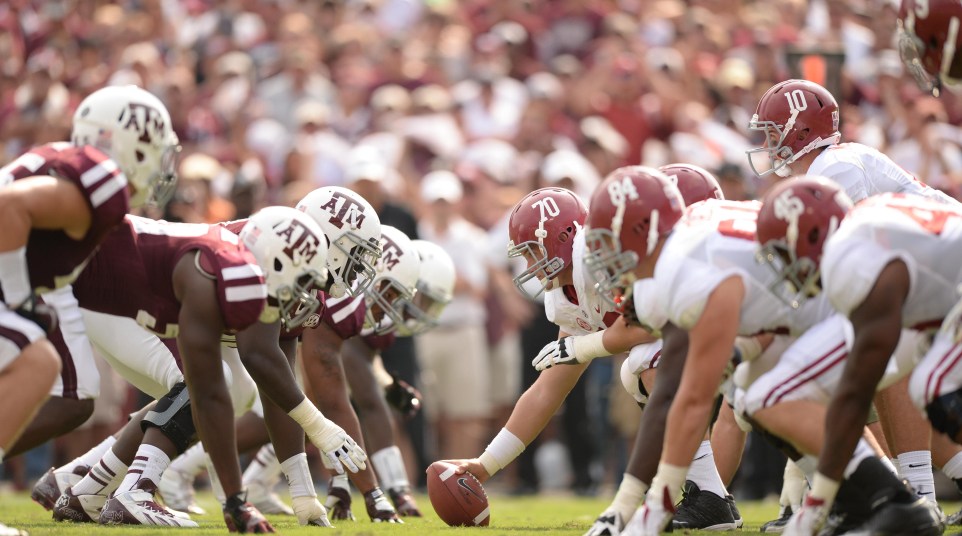A nerd's look at predicting the SEC, Part V: Defensive TDs allowed
It’s always fun when an unheralded name plays out of his mind in a big game.
For those of you who watched the NBA Finals, think early-series Matthew Dellavedova. (Speaking of the NBA, remember Linsanity?)
Often, those scenarios are just as predictable as, to stick with the basketball theme here, the performance of LeBron James after a rough outing. Superstars are unlikely to have consecutive terrible games, and bit players are unlikely to play like stars over and over and over.
Part I: Close games
Part II: Point differential
Part III: Turnover margin
Part IV: Fumble recovery rate
That’s the theory behind examining defensive touchdowns allowed — interceptions or fumbles returned for touchdowns and safeties — for predictive value.
As Grantland’s Bill Barnwell has explained, the number of points a team’s offense gives up to opposing defenses has close to zero statistical correlation from year-to-year in football.
In 2014, half of the SEC’s offenses allowed between 7 and 16 points to opposing defenses. But there were a few outliers, which should get better or worse this fall depending on the previous extreme.
What teams should this affect in 2015?
| Improve | Def. Points Allowed | Decline | Def. Points Allowed |
|---|---|---|---|
| Vanderbilt | 42 | Auburn | 0 |
| Florida | 21 | Georgia | 0 |
| Texas A&M | 21 | LSU | 0 |
| Ole Miss | 16 | Missouri | 0 |
Finally, Commodores fans, we have some good news for you. Vandy was so awful last year — giving up six different touchdowns on interceptions or fumbles. Vanderbilt also surrendered two punt return touchdowns. And that’s despite playing just 12 games, fewer than every SEC team but Kentucky.
If you didn’t know any better, you’d look at Vandy’s defense and think it was awful. The Commodores allowed 33.3 points per game, worst in the SEC. Take away those 56 points for which the defense wasn’t responsible and that number immediately improves to 28.6 points per game. That would’ve ranked 83rd in the FBS instead of 106th.
Take into account Vanderbilt’s terrible offense, which turned the ball over an SEC-worst 29 times and finished last in the conference in total yards per game by a wide margin, and the Commodores’ defense, especially in the front seven, looks like it was much closer to lower-middle class.
Meanwhile, Auburn’s offense lost an SEC-high 13 fumbles and also threw seven interceptions. The Tigers’ 20 turnovers didn’t equate to a single point for opposing defenses. Vanderbilt turned the ball over nine more times than Auburn and gave up 42 more points off those turnovers.
So those Tigers can’t be expected to avoid any pick-sixes or fumble returns for touchdowns all season in 2015.
Overall, this metric isn’t as significant as how a team performs in close games, or a team’s fumble recovery rate, in that we’re talking a difference of a few touchdowns per year rather than more than a handful.
Still, it’s educational; next week we’ll align all the data we’ve uncovered and try to identify some teams who are likely to experience better or worse luck during the 2015 season.
SEC TEAMS RANKED BY DEFENSIVE POINTS ALLOWED IN 2014
| Team | Def. Points Allowed |
|---|---|
| T1. Auburn | 0 |
| T1. Georgia | 0 |
| T1. LSU | 0 |
| T1. Missouri | 0 |
| 5. South Carolina | 7 |
| 6. Mississippi State | 9 |
| T7. Alabama | 14 |
| T7. Arkansas | 14 |
| T7. Kentucky | 14 |
| T7. Tennessee | 14 |
| 11. Ole Miss | 16 |
| T12. Florida | 21 |
| T12. Texas A&M | 21 |
| 14. Vanderbilt | 42 |

